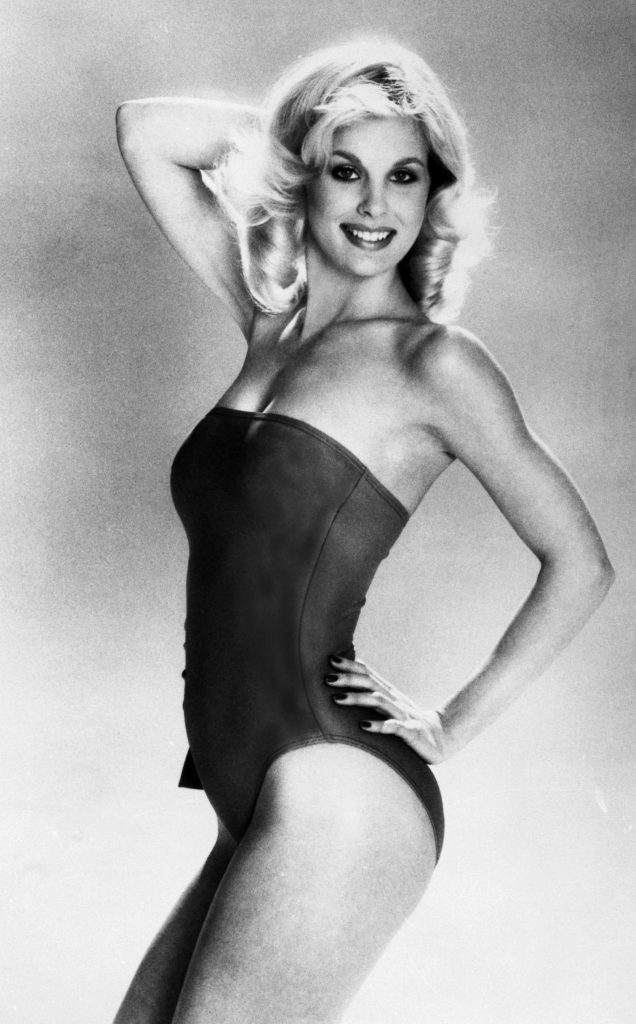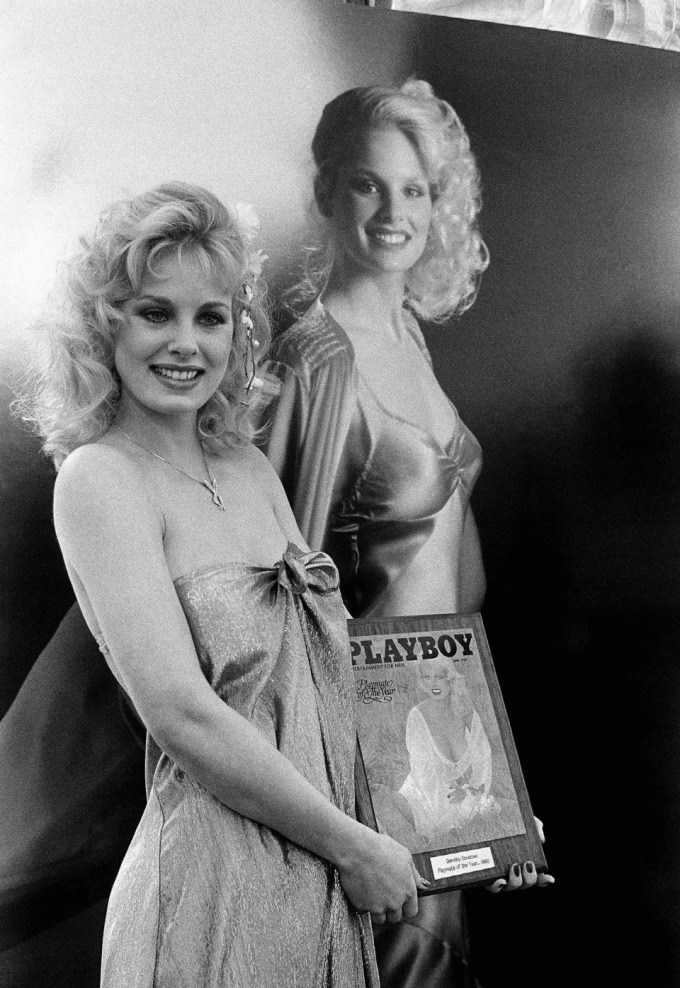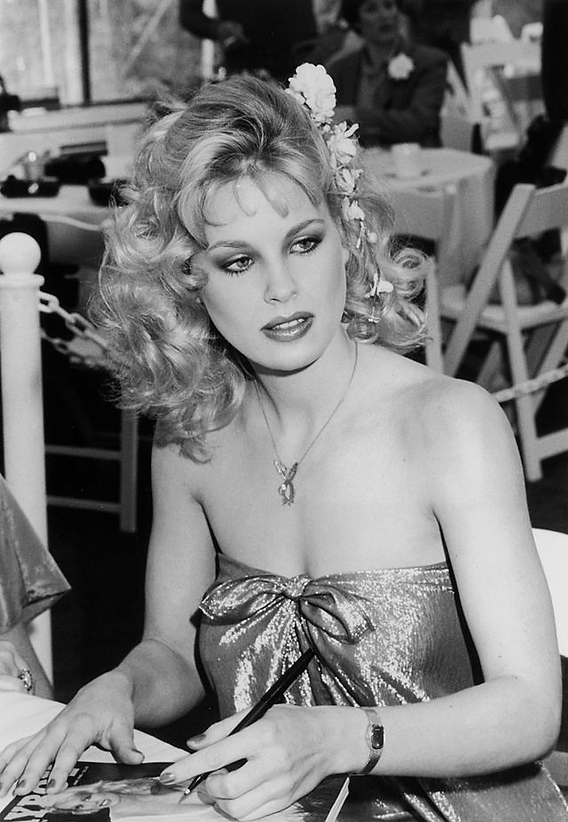Dorothy Stratten was a name that captivated Hollywood and the modeling world in the late 1970s. With her blonde hair, undeniable beauty, and gentle charisma, she was compared to Marilyn Monroe and hailed as a rising superstar. However, her promising career was tragically cut short in a horrifying event that shocked the world.
A Small-Town Girl’s Journey to Stardom

Dorothy Ruth Hoogstraten was born on February 28, 1960, in Vancouver, British Columbia. Raised in a modest family, Dorothy worked part-time at a local Dairy Queen in Coquitlam to help support her single mother. Her life took a dramatic turn in 1977 when she met Paul Snider, a flashy club promoter known for his smooth-talking persona and expensive taste.
Paul saw potential in Dorothy and convinced her to pursue modeling. By the summer of 1978, he arranged for professional n*de photographs, which he sent to Pl*yboy magazine. This decision would forever alter the course of Dorothy’s life.
From Pl*yboy Centerfold to Hollywood’s Rising Star
In August 1978, Dorothy Stratten moved to Los Angeles to chase her dreams. She quickly became a “bunny” at the Pl*yboy Club in Century City. Her natural beauty and effortless charm caught the attention of Pl*yboy founder Hugh Hefner, who saw Dorothy’s star potential.
Her big break came in August 1979 when she graced the pages of Pl*yboy as the centerfold. By 1980, she earned the coveted title of Pl*ymate of the Year, further cementing her status as a rising star. Dorothy’s association with Pl*yboy opened doors in Hollywood.
She began appearing in television series like Buck Rogers and Fantasy Island and landed roles in films such as Skatetown, U.S.A. and Autumn Born. Her first major acting opportunity came in the romantic comedy They All Laughed (1980), directed by Peter Bogdanovich.
The Toxic Relationship: Paul Snider’s Dangerous Obsession
While Dorothy’s career flourished, her personal life spiraled into turmoil. Paul Snider, the man who introduced her to Pl*yboy, became possessive and controlling as her fame grew. Friends and colleagues warned Dorothy about his increasingly toxic behavior, describing Paul as jealous, insecure, and manipulative.
Despite her growing success, Dorothy remained tied to Paul, who acted as her manager and constant shadow. The couple married in June 1979, but the relationship grew strained as Dorothy outshined him in every way. Paul’s dependency on Dorothy’s money and his lack of a stable job fueled resentment and anger.
Peter Bogdanovich: A Love That Triggered Tragedy
During the filming of They All Laughed in March 1980, Dorothy began an affair with director Peter Bogdanovich. The two spent five months together in New York, and Dorothy found herself deeply in love for the first time. Peter encouraged her to leave Paul, recognizing the danger she was in.

By the summer of 1980, Dorothy had quietly moved into Peter’s mansion in Bel Air. She sought to finalize her divorce from Paul and planned for a new beginning. But Paul, who had grown increasingly unhinged, refused to let her go.
The Horrific End: A Life Stolen Too Soon
On August 14, 1980, Dorothy went to meet Paul at their previously shared home in Los Angeles to discuss financial arrangements. Against the advice of her manager and friends, she insisted on speaking to him alone.
That night, Dorothy’s life came to a violent and tragic end. When two roommates returned home, they discovered Dorothy and Paul’s lif*less bodies in the bedroom. The police investigation revealed that Paul had dragged Dorothy upstairs, confined her, and sh*t her before turning the g*n on himself.

Dorothy was only 20 years old. Her d*ath shocked the world, leaving behind questions about why such a promising life ended so brutally.
The Fallout: A Wake-Up Call for Hollywood
Dorothy Stratten’s tragic d*ath sparked discussions about the dangers women face in toxic relationships, particularly in an industry that often prioritizes profit over personal well-being. Insiders from Playboy, like Miki Garcia, described Dorothy’s death as a wake-up call that shed light on the exploitation and sexism prevalent in the entertainment world.
In interviews, Garcia recounted Dorothy’s fears in the months leading up to her death—of her possessive husband, her images, and the overwhelming pressure of her rising fame. Yet, her concerns fell on deaf ears.
A Legacy Immortalized in Art and Culture
Dorothy Stratten’s heartbreaking story inspired multiple adaptations and tributes. Films like D*ath of a Centerfold (1981) and Star 80 (1983) portrayed her life and tragic d*ath, while musicians like Bryan Adams and the Red Hot Chili Peppers paid tribute to her in songs.

In 1984, Peter Bogdanovich published The Killing of the Unicorn, a book that criticized Playboy and Hugh Hefner’s culture for failing to protect Dorothy. Bogdanovich later took care of Dorothy’s family, including her younger sister Louise, whom he married years later.
For those who knew Dorothy, her potential as a Hollywood star remained undeniable. She was described as a gentle, kind soul who gave everything to those she loved. Many believed she would have become a household name, rivaling stars like Julia Roberts and Reese Witherspoon.
Conclusion: Remembering Dorothy Stratten’s Beauty and Talent
Dorothy Stratten’s life was filled with immense promise, but it was tragically overshadowed by toxic relationships and exploitation. Hailed as the “next Marilyn Monroe,” Dorothy’s beauty, grace, and talent captivated the world. Yet her tragic death at just 20 years old remains a painful reminder of how fleeting life can be.
Her legacy lives on through films, songs, and stories that continue to honor her memory. Dorothy Stratten will always be remembered not just for her beauty but for the kind spirit and immense talent that left an indelible mark on Hollywood and beyond.


